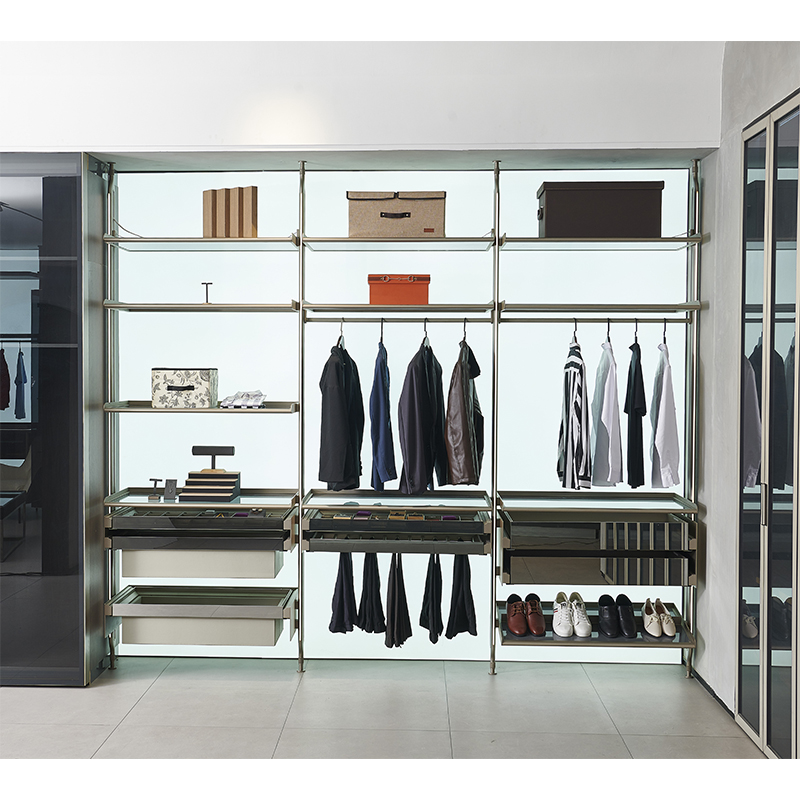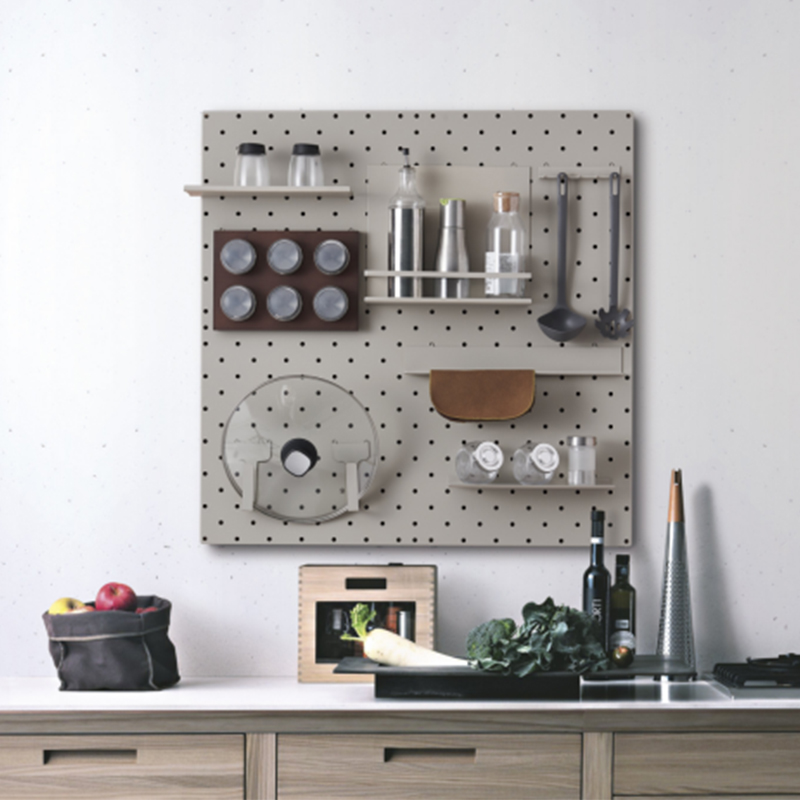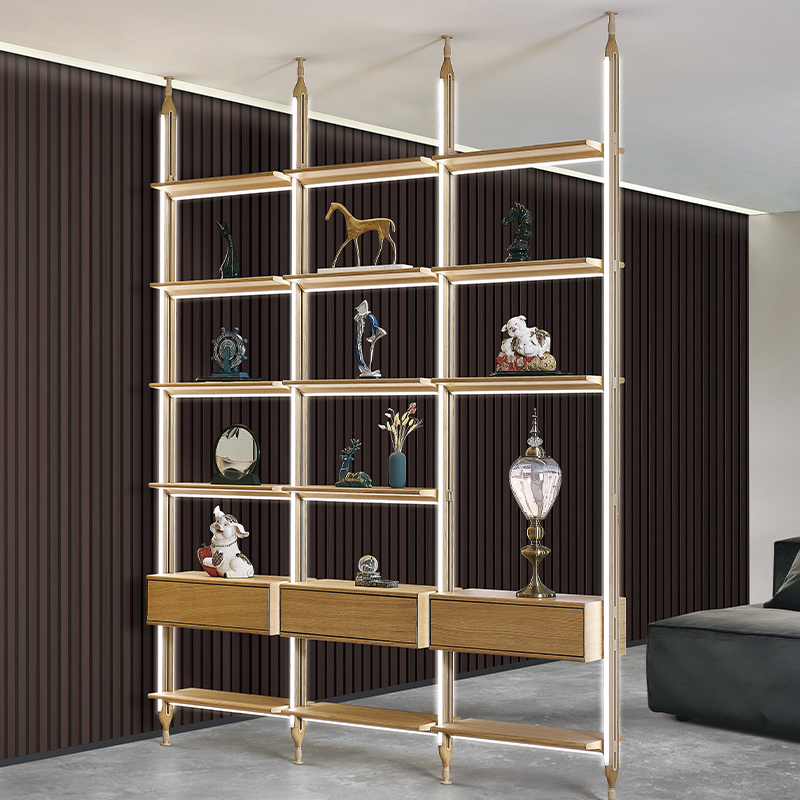Which anti-rust treatment method for wardrobe hardware column partitions is more lasting and effective?
Release Time : 2025-10-21
Wardrobe hardware columns and partitions serve as connectors and support structures, so their rust-proofing directly impacts the lifespan and aesthetics of the wardrobe. Among the many rust-proofing methods, electroplating, vacuum deposition, rust-proofing oil coating, and sealed storage each have their advantages. However, durability and effectiveness require a comprehensive assessment based on material properties, environmental conditions, and usage scenarios.
Electroplating is a process that forms an alloy or metal coating on a metal surface through an electrochemical reaction, such as zinc, nickel, or chromium. These coatings not only isolate air and moisture but also slow down substrate corrosion through sacrificial anodic protection. For wardrobe hardware columns and partitions, the durability of the electroplating process depends on the thickness and uniformity of the coating. High-quality electroplating can remain rust-free for 5-10 years and is particularly suitable for humid environments. However, be aware that pores or scratches in the coating can allow moisture to penetrate and cause corrosion to the substrate. Therefore, ensure that the metal surface is clean and free of defects before electroplating.
Vacuum deposition technology uses physical vapor deposition to form a nanoscale protective film on the metal surface, such as titanium nitride or diamond-like carbon coatings. This type of coating offers high hardness, low friction, and excellent chemical stability, effectively resisting salt spray, moisture, and fingerprint contamination. For frequently used wardrobe hardware columns and partitions, vacuum-deposited coatings can significantly reduce wear and oxidation, often exceeding electroplating. However, this process is costly and primarily used for high-end custom furniture. It also places stringent demands on substrate surface flatness, requiring precision polishing to ensure coating adhesion.
Rust-proof oil coating is a traditional and economical rust prevention method, forming an oil film on the metal surface to isolate corrosive media. For wardrobe hardware columns and partitions, choose mineral or synthetic oils with strong penetration and good adhesion, such as WD-40 with anti-rust additives. Ensure that the oil film evenly covers all gaps during application, and reapply regularly to maintain the protective effect. This method is suitable for dry environments, but may become ineffective in humid areas due to moisture absorption. Combining a desiccant can extend the rust prevention period to one to two years.
Sealed storage, such as using anti-rust bags, anti-rust paper, or vacuum packaging, provides long-term rust prevention by isolating the material from air and moisture. For uninstalled wardrobe hardware columns and partitions, VCI (Vapor Corrosion Inhibitor) rust-proofing tablets can be placed inside the packaging. The volatile corrosion-inhibiting gases adsorb onto the metal surface, forming a protective layer.
This method requires no additional treatment and preserves the hardware's pristine condition. However, care should be taken to ensure the integrity of the packaging to prevent damage during transportation or storage, which could render the rust-proofing ineffective. Sealed storage can provide a rust-proofing period of 3-5 years, making it suitable for inventory management or long-term storage. Phosphating, through a chemical conversion, creates a protective phosphate layer on the metal surface, improving corrosion resistance and enhancing coating adhesion. For wardrobe hardware columns and partitions that require painting, phosphating can significantly improve paint film adhesion and reduce the risk of peeling. However, the phosphate layer itself has limited corrosion resistance and is usually combined with painting or electroplating. This combined rust-proofing method offers superior rust-proofing effectiveness compared to a single treatment alone.
Blackening, using an oxidation reaction, creates a black oxide film, such as ferroferric oxide, on the metal surface. This film improves corrosion resistance, but is thin and requires application in conjunction with oiling or painting. For wardrobe hardware columns and partitions seeking a vintage look, a blackening treatment offers both rust prevention and decorative effects, but regular maintenance is required to prevent wear.
For ultimate durability, vacuum deposition coating and electroplating are ideal options for wardrobe hardware columns and partitions, particularly suitable for high-end customization or humid environments. For cost and convenience, applying rust-proof oil combined with sealed storage offers a cost-effective solution. The actual choice should be carefully considered based on the hardware material, frequency of use, and ambient humidity. Combining multiple treatments can be used to achieve optimal rust prevention.








